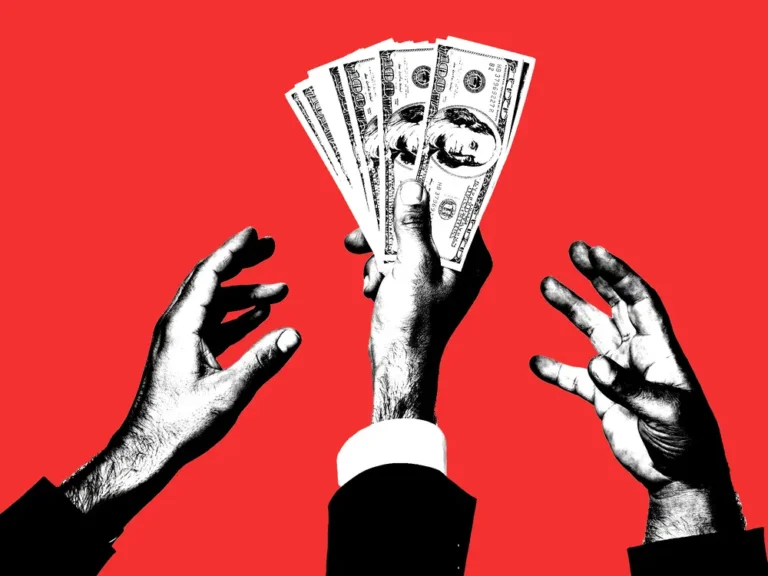6 safe havens for commercial real estate as markets like Austin and San Francisco plummet

- The pandemic real estate bubble is bursting in San Francisco and Austin, Texas.
- But there are still plenty of commercial real estate safe havens, according to a new Moody’s report.
- See 6 cities Moody’s recommends for investors in office properties, multifamily, industrial, and more.
With interest rates so high and financing so difficult to come by, many people are predicting the end of office towers, multifamily apartments, and other commercial real estate.
However, just as the pandemic caused a wave of migration from overcrowded cities to the Sunbelt, today’s real estate market has a mix of winners and losers.
A recent credit-rating agency Moody’s report can help you better understand the state of the commercial real estate market. Not surprisingly, it discovered that tech hubs like San Francisco, as well as pandemic hotspots like Austin, Texas, are suffering. However, according to Moody’s second-quarter 2023 report, there are plenty of safe havens for commercial real estate investors, including some unexpected places like Albany, New York, Hartford, Connecticut, and Toledo, Ohio.
Moody’s analysis is based on a quarterly assessment that assigns a score of 0 to 100 to each market for each asset class, such as apartments, hotels, or industrial warehouses. Each score is then averaged to produce a composite market score of 0-100, indicating the overall health of the market.
The information comes from a variety of sources, including CBRE data and interviews with market professionals, and the grades are largely based on the amount of supply and demand in any market over the next year.
Markets are also color-coded. Green markets, with scores ranging from 67 to 100, are relatively healthy markets that benefit landlords because demand outnumbers supply. Yellow markets, with scores ranging from 34 to 66, are signaling that increased construction or decreased demand may turn them into distressed markets. Red markets (scores 0-33) are already stressed, with supply outpacing growth or extremely high levels of vacancy, which is good for tenants but bad for landlords.
This information can then be used by investors to help inform their investment strategy. It may be prudent to sell a property in a yellow market or to ensure sufficient cash reserves to weather the storm. People looking to buy in that area should think twice.
“If a market has a low score, you better look very carefully at your current numbers when you underwrite, and make sure you feel that you’re being conservative,” Darrell Wheeler, Moody’s head of CMBS research and report author, told Insider.
In the meantime, a market with a high score may be a better bet for a future investment or an indication that a current investor should hold onto their investments in the area. Green markets may also signal lower borrowing costs.
Check out the latest report for some surprising stats, such as the unexpected cities poised to do well for commercial real estate investors as the pandemic boom fades.
Omaha, Nebraska: A market score of 80.
Omaha, Nebraska, may not appear to be a real-estate investment hotspot, but that is precisely why the Midwestern city topped Moody’s list. At 2.5%, Omaha’s industrial has the nation’s second lowest vacancy rate. While other markets saw a significant increase in warehouse construction, Omaha’s slower pace has kept vacancy levels low.
“If you look at the amount of industrial that we saw added in the last four or five years, it’s been as much as we’ve seen in a 20-year span,” said Wheeler.
Omaha’s small size also contributes to its high score, as it only has three asset types large enough to be tracked out of the six covered by the report.
Toledo, Ohio: A market score of 79.
According to the NAR and realtor.com, buyers earning at least $75,000 in Toledo, Ohio, can afford to purchase 61% of listings.
Getty Images/Sean Pavone
Toledo, with the second-highest overall ranking, continues the theme of small, relatively sleepy markets that are expected to perform well next year. Toledo received green ratings in all four asset types tracked by Moody’s for the report, including suburban and central business district office space.
In a challenging office market, Toledo’s central business district office has a 7.1% vacancy rate, which is 11.4% lower than the overall vacancy rate. In comparison, the vacancy rate in suburban offices is 6.2%, which is 11.8% lower than the composite rate.
The lack of investment in Toledo’s industrial market has also aided supply growth, with supply increasing by only.4% of the market’s size.
This map contrasts suburban offices. Toledo, located south of Detroit, is one of the few markets that is profitable.
Albany, NY: Composite market score of 77
Albany, New York’s State Capitol and Empire State Plaza.
Joe Sohm/Universal Images Group/Visions of America via Getty Images
Albany, New York State’s capital city, has long been in the shadow of New York City, but according to Moody’s, it is the third-highest city by composite score. Wheeler cited the city’s incoming technology employers as one factor, citing the opening of a fuel cell gigafactory earlier this year Nonetheless, the metro’s high performance in both the central business district and suburban office is the real performance driver.
“In that area, office buildings are few and far between,” Wheeler told reporters.
It has a vacancy rate of 5.1% for both types of offices, which is less than one-third that of the composite score.
Furthermore, the city’s performance is rounded out by high scores in both industrial (with a 2.7% vacancy rate) and hotels.
Albuquerque, New Mexico: A market composite score of 77
Photographer: Sam Wasson/Getty Images
The Sunbelt, with Austin as a leading example, has seen its fortunes shift dramatically in the last year. However, Albuquerque, which avoided some of the craziness that plagued other Sun Belt cities, is one of Moody’s top performers.
It is the best performer in industrial, with an astonishingly low 1.1% vacancy rate, and it also performs well in retail, hotel, and multifamily. Its multifamily score has risen 11 points since the first quarter as oncoming supply has decreased, indicating that higher interest rates are helping some markets. This is in contrast to other Sunbelt markets that are experiencing abundant supply.
Despite a red score for central business district offices and a yellow score for suburban offices, the rate is. Much of this is due to low demand, with central business office demand ranking third lowest and suburban office demand ranking fifth lowest.
Hartford, CT: Composite market score of 72
Hartford is a city in Connecticut.
Shutterstock/Sean Pavone
Hartford is another unexpected city near the top of the list. It’s not ideal for commuting to Boston or New York, and many of the insurance behemoths that once called it home have relocated. Its central business district office score reflects these difficulties, with vacancies in its office towers.
However, Hartford had the highest hotel score, owing in part to the lack of new supply entering the market. Similarly, it has the fifth-best industrial score, with no new supply in motion.
A market’s overall health can benefit from a lack of development.
New York, New York: Market Composite Score of 66
New York City skyline
marchello74 for Getty Images
The early days of the pandemic were filled with dire predictions for New York City. It is now the most highly rated mega-market on Moody’s list. This has occurred despite the fact that high-profile office failures dominate media coverage.
New York has the highest score in retail, where it leads the nation due to a relative lack of new supply and as people resume shopping in stores.
However, New York’s high-performing multifamily market is also helping the city’s score, as it has the lowest vacancy rate of any mega-market at 3.1%.
Austin, Texas has a composite market score of 22.
On April 11, 2023, the downtown skyline of Austin, Texas is seen from above.
Photographer: Brandon Bell/Getty Images
During the pandemic, Austin, Texas was a darling, attracting scores of remote workers looking to trade high taxes and cramped apartments for a state without an income tax and a lower cost of living. It also attracted huge amounts of real estate investment capital, chasing these workers who helped the city’s population grow 5% from 2020 to 2022, the largest change of any metro during that time.
As investment has slowed and some tech workers are looking to leave, the city now has the lowest composite rating in Moody’s report, the only city with a red score. According to Wheeler, three dynamics are at work here. The first is the massive investment in recent years, the second is Austin’s small size, and the third is the report’s conservative tone.
According to Wheeler, Austin’s office market was approximately 50 million square feet in 2019, and it is now 60 million square feet, representing a 20% increase in market size. With well over 150 million square feet, Austin’s market is still much smaller than a “mega-market” like Dallas, so the additional 10 million square feet of office space has a significant impact on vacancy levels. As a result, vacancy rates are increasing, despite the fact that many new office workers are moving to the city, attracting investment capital.
Investors, on the other hand, are not stupid. They’ve been tracking a significant influx of new office workers, with office employment increasing by 30% while space only increased by 20%.
“This report doesn’t anticipate 30% rates of employment growth continuing, it is meant to be conservative,” Wheeler told reporters. “It is very possible that Austin continues to see high employment growth this next year and that some of that space will get taken up.”
As a result, Austin’s multifamily market has the lowest rating in the country, despite having the best forecast demand, with a 9.2% increase in demand. The catch is that supply is expected to grow 10% faster than demand.
This dynamic was evident in the majority of Austin markets, including suburban office demand and industrial. Many of the top-performing markets are also driven by the exact inverse.






